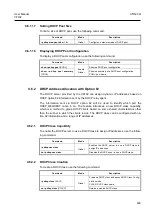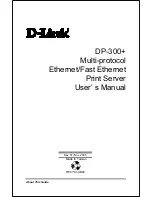
UMN:CLI
User Manual
V8102
390
no spanning-tree vlan
VLANS
forward-time
Returns to the default value of PVSTP per VLAN.
9.4.12.3
Max Age
Maximum aging time is the number of seconds a switch waits without receiving spanning-
tree configuration messages before attempting a reconfiguration. To configure the maxi-
mum aging time for deleting useless messages, use the following command.
Command
Mode
Description
spanning-tree mst max-age
<6-
40>
Global
Changes the maximum aging time of route message of
MSTP.
6-40: maximum aging time value (default: 20 sec)
spanning-tree vlan
VLANS max-
age
<6-40>
Changes the maximum aging time of route message of
PVSTP per specified VLAN.
VLANS: VLAN ID (1-4094)
6-40: maximum aging time value (default: 20 sec)
We recommend that the maximum aging time is set less than twice of forward delay time
and more than twice of hello time.
To delete a configured maximum aging time, use the following command.
Command
Mode
Description
no spanning-tree mst max-age
Global
Returns to the default maximum aging time value of
MSTP.
no spanning-tree vlan
VLANS
max-age
Returns to the default maximum aging time value of
PVSTP.
VLANS: VLAN ID (1-4094)
9.4.12.4
BPDU Hop Count
In MSTP, it is possible to configure the number of hops in order to prevent BPDU from
wandering. BPDU passes the switches as the number of hops by this function.
To configure the number of hops of BPDU in MSTP, use the following command.
Command
Mode
Description
spanning-tree mst max-hops
<1-
40>
Global
Configures the number of hops for BPDU, set the
number of possible hops in MSTP region:
1-40: the number of hops for BPDU (default:20)
no spanning-tree mst max-hops
Deletes the number of hops for BPDU in MSTP.
9.4.12.5
BPDU Transmit hold count
You can configure the BPDU burst size by changing the transmit hold count value. To
configure the transmit hold-count, use the following command.
i
















































